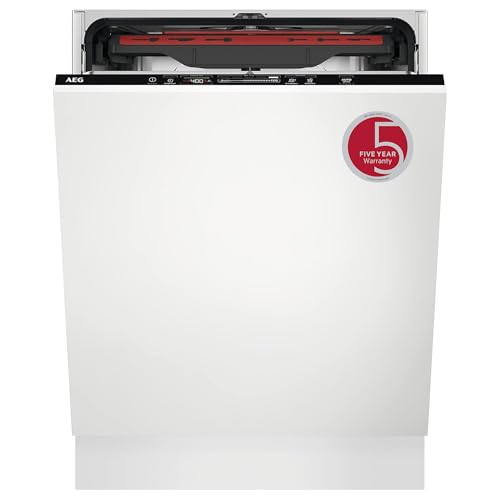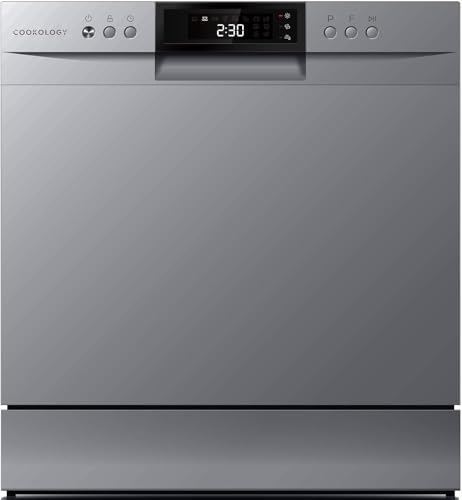




Are you experiencing issues with your dishwasher tablet not releasing during the wash cycle? This common problem can be frustrating, but luckily there are several causes and solutions you can try to fix it. In this article, we will investigate the primary causes of this issue and provide some helpful tips to get your dishwasher working properly again.
One possible cause of the tablet not releasing is a malfunctioning dispenser door. If the door is stuck or not opening fully, the tablet may not be able to dissolve and release into the water. To fix this, you can try to manually open the door to see if there is any visible damage or if something is blocking it from opening fully.
Another common cause of this issue is a clogged dispenser tray. Over time, detergent residue can build up and prevent the tablet from dissolving properly. To fix this, try cleaning the dispenser tray thoroughly and remove any residue or clogs that may be present.
If neither of these solutions work, there may be a problem with the dishwasher’s inlet valve. The inlet valve controls the flow of water into the dishwasher and may not be opening fully or at all, causing the tablet not to dissolve. You can try cleaning the inlet valve or replacing it if necessary.
In conclusion, if your dishwasher tablet is not releasing, there are several potential causes to consider. Issues with the dispenser door, clogged dispenser tray, or malfunctioning inlet valve can all prevent the tablet from dissolving. Try investigating these areas and following the tips mentioned above to fix the problem and get your dishwasher working properly again.
Dishwasher Tablet Not Releasing – Causes and Solutions
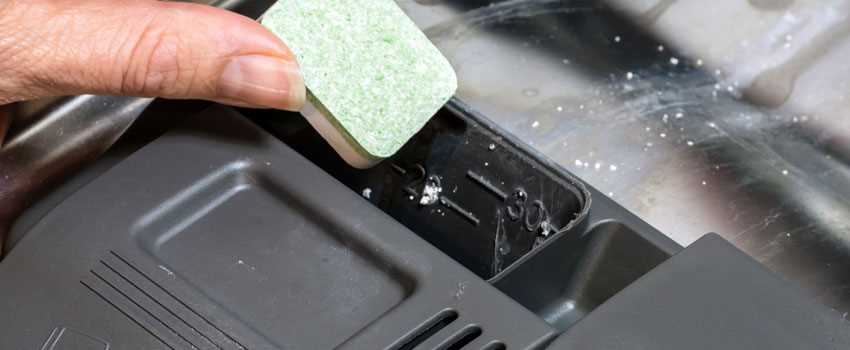
If you’re experiencing issues with your dishwasher tablet not releasing, there could be several reasons why. In this article, we will explore the common causes of this problem and provide some solutions to help you resolve it.
1. Improper Heating
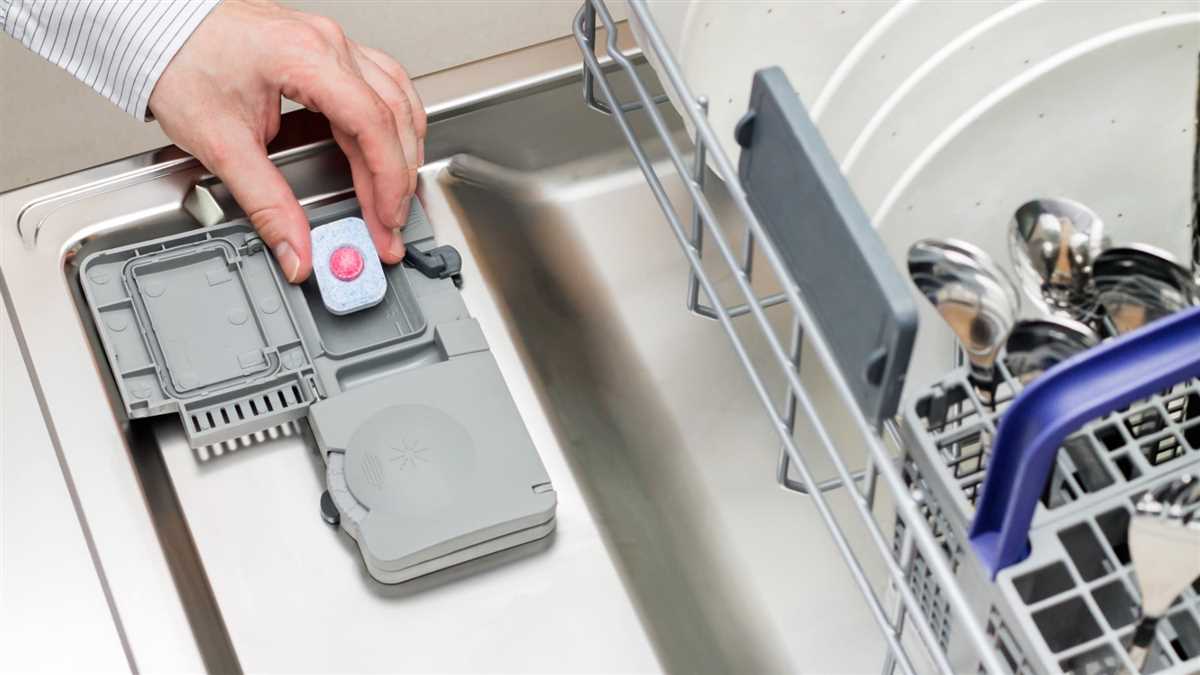
One possible reason why your dishwasher tablet is not releasing is because the water in your dishwasher is not getting hot enough. Proper heating is crucial for dissolving the tablet and activating its cleaning agents. Check if the heating element in your dishwasher is functioning correctly. If it’s faulty, you may need to get it repaired or replaced.
2. Clogged Spray Arm or Pump
If the spray arm or pump in your dishwasher is clogged, it can prevent the tablet from fully dissolving and releasing. Check for any blockage in these components and clean them thoroughly. You can use a toothpick or a small brush to remove any debris or buildup.
3. Low Water Pressure
If your dishwasher is not getting enough water pressure, the tablet may not dissolve properly. Check if the water supply valve is fully open and the water pressure is sufficient. If not, you may need to call a professional to fix the issue or adjust the water pressure settings.
4. Damaged or Dirty Dispenser Tray
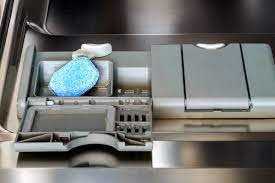
Inspect the dispenser tray in your dishwasher to see if it’s damaged or dirty. If it’s broken or has residue buildup, it may not release the tablet correctly. Clean the dispenser tray thoroughly and make sure it’s in good condition. If it’s damaged, you may need to get it repaired or replaced.
5. Incorrect Loading of Dishes
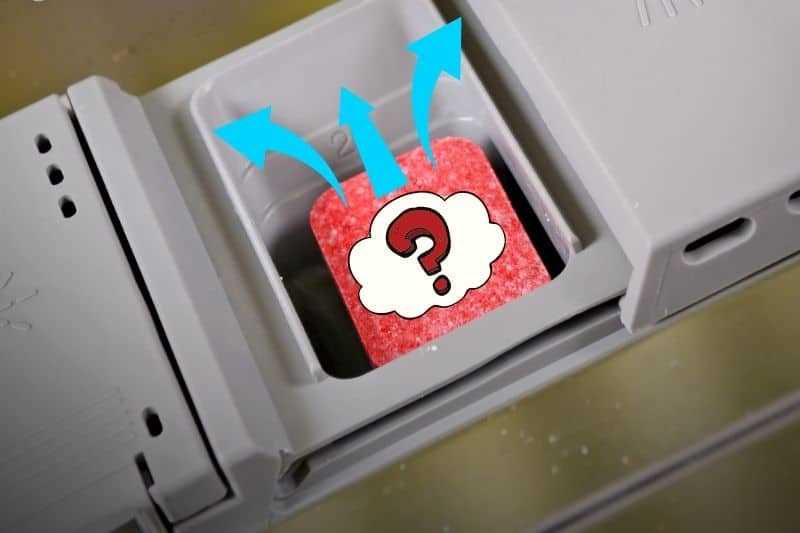
The way you load your dishes can also affect the release of dishwasher tablets. Make sure you’re not overcrowding the dishwasher and that the dishes are properly arranged. Blocked or hindered access to the dispenser tray can prevent the tablet from being released during the wash cycle.
6. Related Motor or Circulation Issues
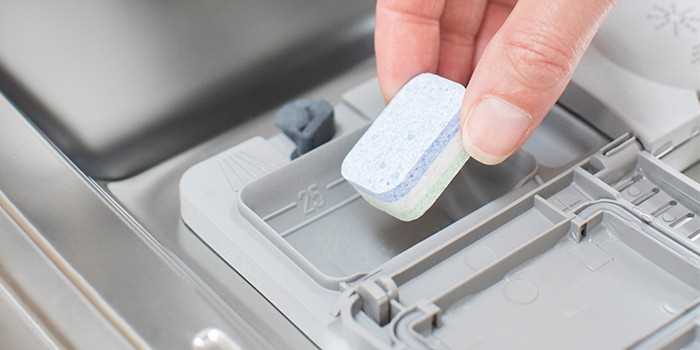
If there are any issues with the motor or circulation system in your dishwasher, it can affect the tablet release. Faulty motors or circulation pumps may not distribute water evenly, leading to insufficient tablet dissolution. It’s best to consult a professional to diagnose and solve any motor or circulation-related problems.
By addressing these common causes, you can troubleshoot and resolve the issue of your dishwasher tablet not releasing. If you’ve tried all the solutions mentioned above and are still experiencing problems, it may be best to contact a professional dishwasher service provider in your country for further assistance. Remember to always follow the manufacturer’s instructions and guidelines when using dishwasher tablets to ensure optimal performance.
Common Reasons for Dishwasher Tablet Not Releasing
If you’ve noticed that your dishwasher tablet is not releasing during the wash cycle, there could be several causes for this issue. Here are some common reasons to consider:
- Clogged detergent dispenser: The most common reason for the tablet not releasing is a clogged detergent dispenser. Over time, detergent residue can build up in the dispenser, preventing it from opening properly. To fix this issue, you can try cleaning the dispenser and removing any buildup. If the dispenser is damaged, you may need to replace it.
- Low water temperature: Dishwasher tablets are formulated to dissolve at specific water temperatures. If the water temperature is too low, the tablet may not dissolve completely. Make sure your water heater is set to a hot enough temperature to ensure proper dissolving of the tablet.
- Dishwasher spray arm not spinning: The spray arm is responsible for distributing water throughout the dishwasher. If the spray arm is blocked or not spinning properly, it can prevent the tablet from dissolving and releasing. Check the spray arm for any clogs or damage and clean or replace it if necessary.
- Damaged wax motor or closed valve: Some dishwasher models use a wax motor or a closed valve mechanism to release the detergent tablet at the right time. If the wax motor is damaged or the valve is stuck closed, the tablet may not release. You may need to call a professional to repair or replace these components.
- Buildup or residue on the tablet tray: If the tablet tray is dirty or has residue buildup, it can interfere with the tablet’s release. Clean the tray thoroughly to ensure proper functioning.
- Too many dishes or overcrowding: Overloading the dishwasher with too many dishes can prevent the tablet from dispersing properly. Make sure to leave enough space for water circulation.
- Recent dishwasher repairs or motor failure: If you’ve recently had your dishwasher repaired or if the motor has failed, it could affect the tablet release mechanism. Investigate if any recent repairs or motor issues are related to the problem.
If you’ve tried all of these troubleshooting steps and the tablet still isn’t releasing, it may be time to call a professional to further investigate and solve the issue.
Possible Solutions for Dishwasher Tablet Not Releasing

If your dishwasher tablet is not releasing properly, there may be several causes and solutions you can try before contacting a professional service. Below are some common causes and possible solutions to help you investigate and solve the issue.
1. Blocked Dispenser
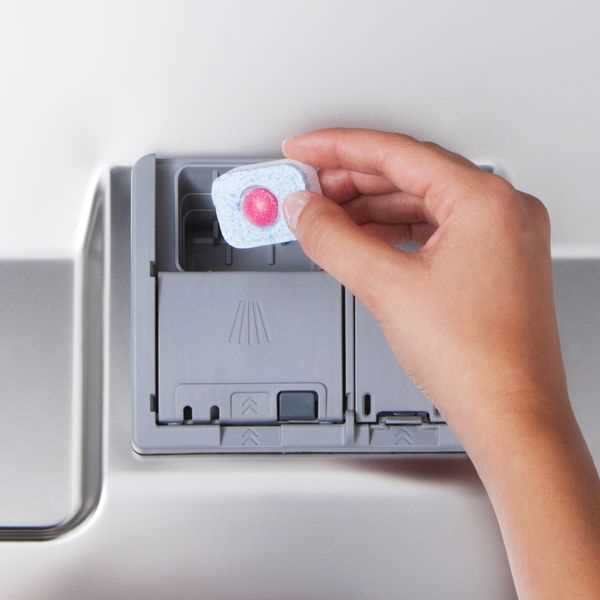
One of the main causes of a dishwasher tablet not releasing is a blocked dispenser. Over time, detergent buildup or a damaged dispenser mechanism can prevent the tablet from being released. To solve this issue, try the following:
- Inspect the dispenser tray for any blockage or damage. Clean or replace if necessary.
- Make sure the dispenser is not loose and properly sealed.
- If the dispenser is damaged beyond repair, you may need to have it replaced.
2. Low Water Pressure
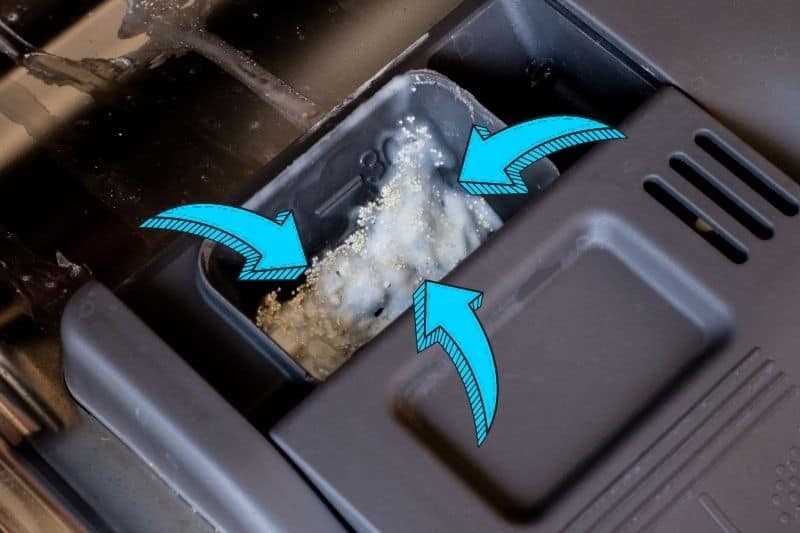
A common reason why dishwasher tablets may not release properly is low water pressure. If the water pressure is too low, the tablet may not dissolve and release as intended. To solve this issue, try the following:
- Check the water supply in your home to ensure it is sufficient.
- Clean the spray arm and the spray arm holes to ensure proper water distribution.
- Investigate if there are any blockages in the water pump or other parts of the dishwasher that may be causing low water pressure.
3. Heating Failure

If the water in your dishwasher is not heating properly, it can prevent the tablet from releasing. The high temperature is necessary for the tablet to dissolve and activate properly. To solve this issue, try the following:
- Check the heating element of your dishwasher for any damage or failure. It may need to be repaired or replaced.
- Make sure the heating element is getting power and properly connected.
- If you’re unsure how to check or repair the heating element, it’s recommended to browse online tutorials or contact a professional service for assistance.
4. Faulty Tablet Distribution
If the tablet is not distributed evenly in the dishwasher during the cycle, it may not dissolve and release properly. This can be caused by a faulty tablet distribution mechanism or other factors. To solve this issue, try the following:
- Check if there is any buildup or blockage in the tablet distribution mechanism. Clean or remove any debris if necessary.
- Ensure that the dishwasher is loaded properly, with enough space for the tablet to move around freely.
- If the tablet distribution mechanism is damaged or not working correctly, it may need to be repaired or replaced.
5. Other Possible Causes

If the above solutions do not solve the issue, there may be other factors causing the tablet not to release properly. These can include a faulty pump, loose connections, or other mechanical failures. It is best to contact a professional dishwasher service to investigate and repair the problem.
In conclusion, when your dishwasher tablet is not releasing properly, it can be frustrating. However, by following the possible solutions mentioned above, you can try to solve the problem on your own. If the issue persists or if you are unsure about how to solve it, consider seeking professional help to ensure the proper functioning of your dishwasher.
Tips to Avoid Dishwasher Tablet Not Releasing
- Ensure that your dishwasher is in proper working condition before putting in a tablet. If your dishwasher is not working, you can either try to fix it yourself or call a repair service.
- Remove any loose food particles or debris from the dishwasher before starting a wash cycle. This will help prevent blockage and ensure that the tablet dissolves properly.
- Check if the dishwasher door opens fully during the wash cycle. If the door is partially closed or blocked, it can prevent the tablet from being released.
- Make sure that the water in your dishwasher is heating up to the required temperature. If the water is too cold, the tablet may not dissolve properly.
- Check the dispenser compartment to ensure that it is not clogged or blocked. Clean any residue or debris that may be preventing proper tablet release.
- If your dishwasher has rotating spray arms, make sure they are not blocked or obstructed. Poor water circulation can prevent the tablet from dissolving fully.
- If you still have issues with the tablet not releasing, try using a different brand or type of dishwasher tablets. Some tablets may work better with certain dishwasher models.
- Consider increasing the water pressure in your home. Low water pressure can affect the performance of your dishwasher and prevent proper tablet release.
- If all else fails, it may be a sign of a faulty dispenser or motor. In this case, it is recommended to call a professional for repair or replacement.
Do Not Try Putting the Tablet Loose into the Machine
Putting dishwasher tablets loose into the machine may seem like a quick and easy solution when the tablet is not dissolving or releasing properly. However, this is not a recommended approach as it can cause several issues and damage to your dishwasher.
When you choose to put the tablet loose, it can get caught in the dishwasher’s mechanisms and clog them. The tablet may not dissolve properly and can leave residue in the machine, leading to poor cleaning results. Additionally, loose tablets can cause damage to the spray arms, pump, and motor, which can be costly to repair or replace.
If you are experiencing issues with your dishwasher tablet not releasing, it is important to investigate the root cause of the problem. There are several common reasons why a tablet may not dissolve or release properly:
- The spring-loaded dispenser mechanism may be broken or blocked. In this case, you may need to call a professional service to repair or replace the dispenser mechanism.
- The dispenser tray may be clogged with detergent buildup or debris. Clean the dispenser tray thoroughly to ensure proper dispensing of the tablet.
- The water inlet or circulation arms may be blocked. Make sure they are free of any debris or obstructions.
- The pump or motor may not be working properly. If you suspect an issue with these components, it is best to contact a professional service for repairs.
To ensure that your dishwasher tablet releases properly, it is recommended to follow these tips:
- Place the tablet in the designated compartment in the dishwasher’s dispenser tray. Make sure it is fully seated.
- Check the spray arms for any clogs or restrictions and clean them if necessary.
- Run the dishwasher on the appropriate cycle for your dishwasher tablet. Refer to the manufacturer’s instructions or the tablet packaging for guidance.
- Make sure the water pressure in your home is sufficient for proper tablet dissolution. If you have low water pressure, it may be necessary to address this issue separately.
- If you have tried these tips and are still experiencing issues, it may be best to consult the dishwasher’s user manual or contact the manufacturer for further assistance.
Remember, putting dishwasher tablets loose into the machine is not a solution and can cause more problems. Take the time to investigate the issue and follow the recommended steps to ensure adequate tablet dissolution and proper dishwasher functioning.
FAQ
Why is my dishwasher tablet not releasing?
There could be several reasons why your dishwasher tablet is not releasing. It could be due to a faulty dispenser, clogged spray arms, improper loading of dishes, or a malfunctioning timer. It is best to check these components and troubleshoot the issue.
How do I check if the dishwasher dispenser is faulty?
To check if the dishwasher dispenser is faulty, you can perform a simple test. Start a wash cycle and observe if the dispenser door opens at the designated time. If the door doesn’t open, it is likely that the dispenser is faulty and needs to be replaced.
What should I do if the spray arms are clogged?
If the spray arms are clogged, it can prevent the dishwasher tablet from being released properly. To clean the spray arms, remove them from the dishwasher and use a toothpick or similar tool to remove any debris or residue. Rinse the spray arms thoroughly and reinstall them in the dishwasher.
Could improper loading of dishes cause the dishwasher tablet not to release?
Yes, improper loading of dishes can cause the dishwasher tablet not to release. Overloading the dishwasher or blocking the dispenser can prevent the tablet from dissolving properly. Make sure to load the dishes correctly and avoid placing large items in front of the dispenser.
Is a malfunctioning timer a common reason for dishwasher tablet not releasing?
A malfunctioning timer can indeed be a common reason for the dishwasher tablet not releasing. The timer controls the various functions of the dishwasher, including the release of detergent. If the timer is not functioning correctly, it may not activate the dispenser at the right time, causing the tablet to remain undissolved.
Can I fix the dishwasher tablet not releasing issue myself?
Depending on the cause of the issue, you may be able to fix the dishwasher tablet not releasing problem yourself. If it is a simple matter of a clogged spray arm or improper loading of dishes, you can clean the spray arm or adjust your loading technique. However, if the issue is more complex, such as a faulty dispenser or timer, it is recommended to seek professional repair services.

